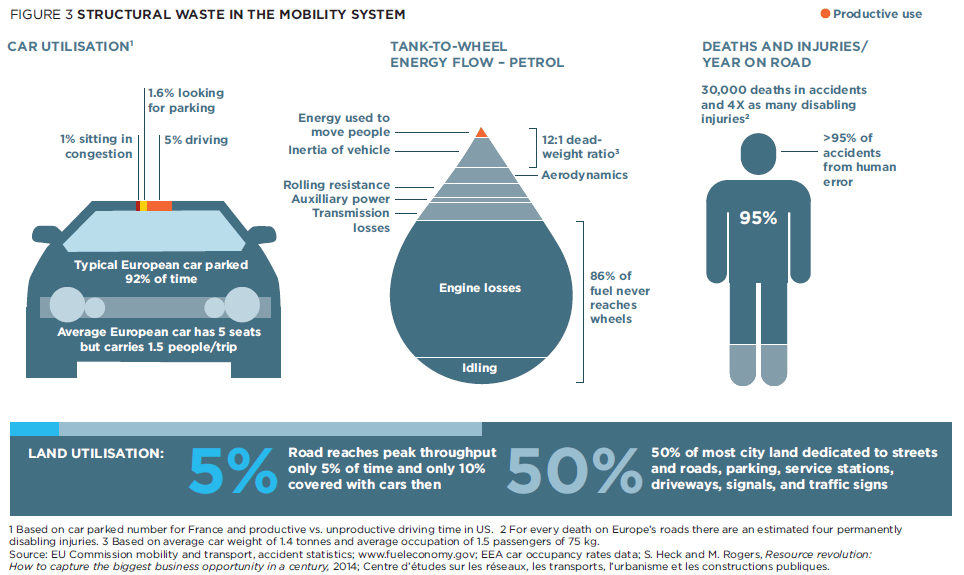
Some say we’re in the Age of Acceleration, or, as Zygmunt Bauman says, a society in Liquid Times. Even though technology’s impact is evident in practically every field, the uses, habits, and solutions associated with urban mobility are going through a time of profound, dizzying transformation.
Just a few years have gone by since we posted MaaS transporte, menos vehículos (More MaaS Transit, Fewer Vehicles), and three years since this article in The Economist concluded that ‘it starts with a single app.’ That was ages ago if we look at the changes that are all around us today. Trying to guess what’s just around the corner seems like risky business. Even so, we can weed out the next 10 trending topics that are more or less linked to one another.
The smart cities will only be as smart as they are ‘resposive.’
As Professor Gerhard Schmitt of ETH Zurich explains, that’s to shift the focus from devices to residents. People contribute to urban design and decision-making more actively by situating ourselves at the heart of the action. The rise of smartphones paradoxically brought about the fall of Enlightened (Tech) Despotism, an era when residents were just witnesses to the division of power.
Alongside that, the sharing economy has surpassed all expectations, with paradigmatic examples like Airbnb, the platform that’s made it easier for us to rent an apartment to go on vacation – and put our house up for rent at the same time.
Along with the rise in costs associated with owning a vehicle (purchase price, gas, insurance, etc.) and the growing difficulties of parking anywhere around town, the old ways of getting around town are going through a structural crisis. As shown in the graphic below, cars in Europe are parked 92% of the time, but half of the space is reserved for them. Even though a car usually has 5 seats, it will only have 1.5 passengers on average per trip. A huge waste of resources.

Reducing emissions has come to stay on the urban agenda
Director of the DGT Pere Navarro has summed up how major cities dissuade pollutant vehicles from coming in, raise the price of parking, create pedestrian zones and protocols for periods of increased pollution, etc. And there’s no doubt that they’ll continue to do so, with ever more popular support swayed by the quality of the air we all breathe, along with other powerful arguments.
Spain is getting ready for the electric car and not looking back
In terms of public charging stations alone, it is projected the number will grow from the current 4,800 stations to over 90,000 in the next five years. Ultra-fast charging will make it possible to completely charge a vehicle in just 20 minutes.
Traditional transportation has to coexist alongside the new solutions that arise
Every day, there are more alternatives for getting around the city in every style and color imaginable, from bikes at affordable prices, to scooters (eCooltra, Yugo, Movit), carsharing (Zity, eMov, Car2Go, Wible), collaborative mobility (Avancar, SocialCar, BlaBlaCar), ride-hailing (Ntaxi, DedoCar), and a growing category that falls under “etcetera.”
There’s continual development on self-driving vehicles, Elon Musk’s futuristic tunnel, and manufacturers themselves are studying how to outfit conventional cars with individual means (for example, electric skates). Governments have to find solutions for the challenges posed by the first and last mile, that is, the difficulty of getting from your departure point to the train station, the bus, the metro, etc. and from those modes of transportation to your final destination. The current difficulties around that question lead to our dependency on cars and thus to more traffic jams (which are often chaotic) and unacceptable levels of pollution, more suggestive of sick cities than smart ones.
Intermodal transportation is already a reality we have at our fingertips
While public administration incentivizes using a combination of modes of transportation on one ticket, the private sector is developing apps like Wondo that are designed to integrate different solutions in real time. Even Renfe, which is a totally public enterprise, announced it is working with other operators to launch a travel platform “where the client never has to catch a train.”
Last (and certainly not least), the reason why the rise in new mobility platforms hasn’t been entirely exponential is, according to McKinsey, rooted in privacy and the fact that our private information is worth more than any app. Our personal data wants to be for personal use.
For years, experts have been talking about the “three Vs” of Big Data: volume (the number of computers connected to each other, storing 21st century manna); velocity (the data sent every second by any of the 25 billion devices that will be connected to the Internet in 2020, according to Gartner), and variety (heterogeneous data of various formats). Undoubtedly, there are more Vs, like veracity, a topic that deserves a post all to itself. The thing is, there are multiple threats surrounding the improper use of our personal data, and they are highly unknown.
In the new responsive city, we residents have also irreversibly internalized the fact that, when a service is free, we are the product.





There are no comments yet